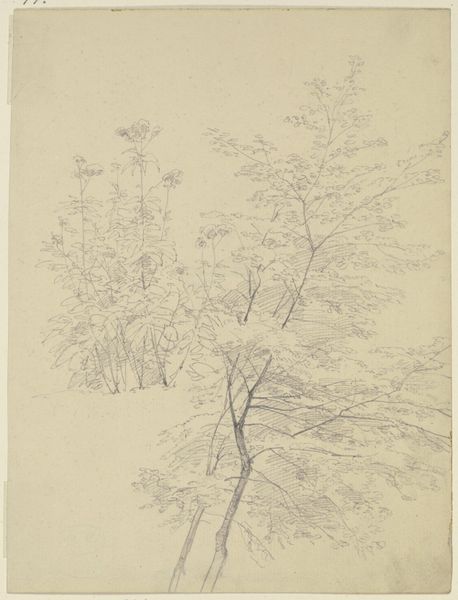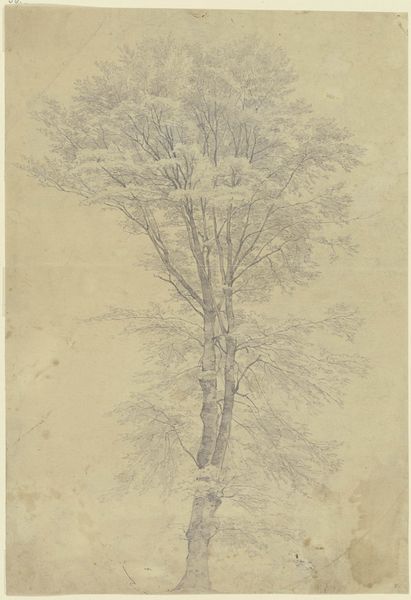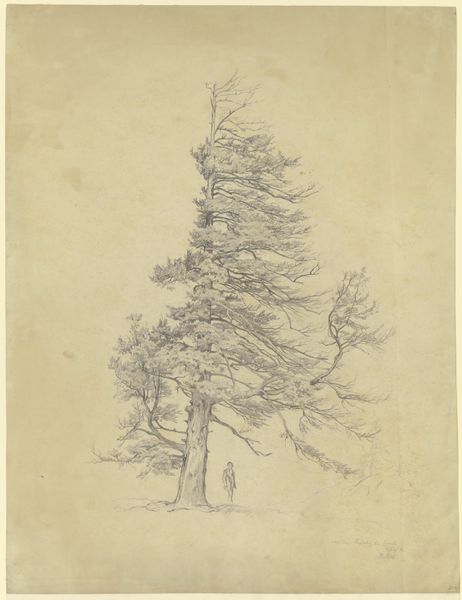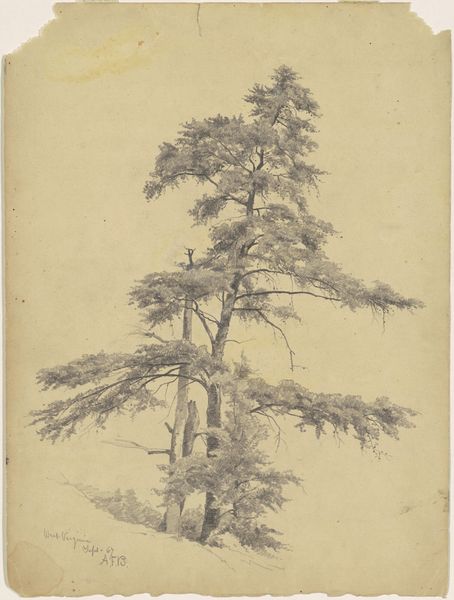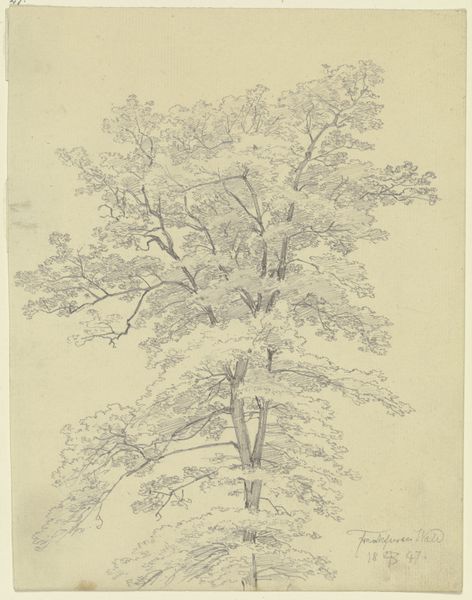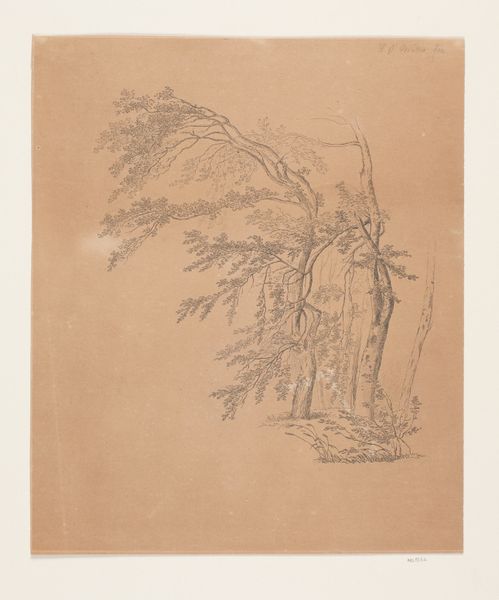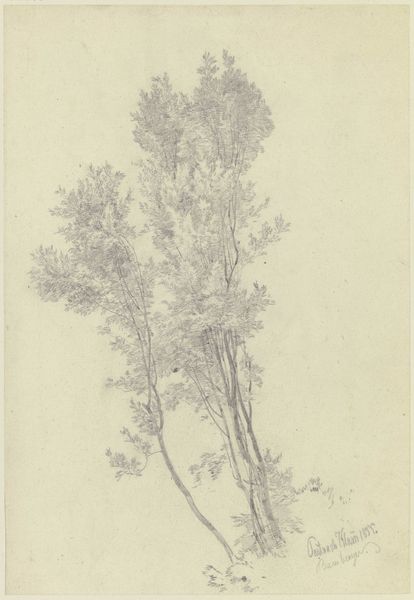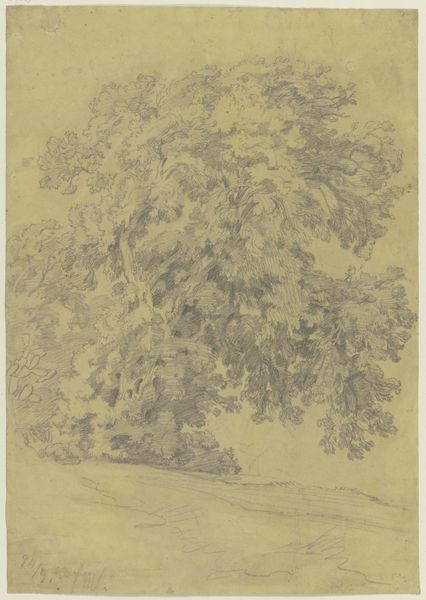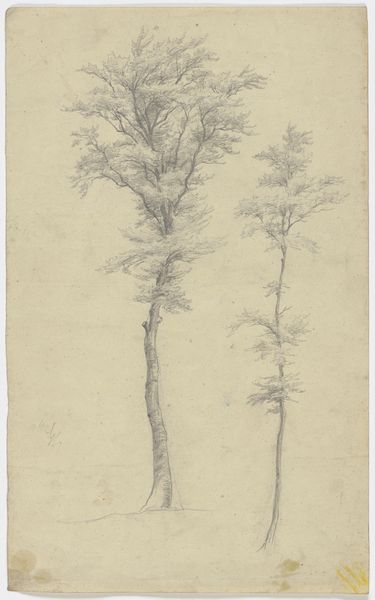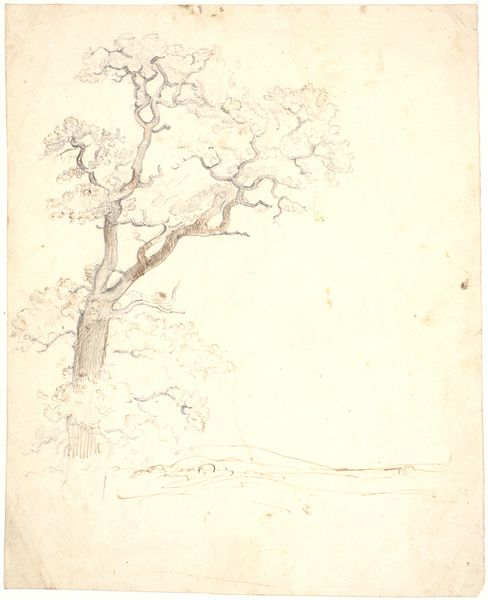
drawing, pencil
#
drawing
#
landscape
#
pencil
#
hudson-river-school
#
line
#
realism
Dimensions: sheet: 35.4 × 25.24 cm (13 15/16 × 9 15/16 in.)
Copyright: National Gallery of Art: CC0 1.0
Editor: This drawing, "Oaks, Wolf Hill, Ulster County," by Andrew Fisher Bunner, made in 1866 with pencil, is quite striking. The composition seems to celebrate the natural environment. How do you interpret this work? Curator: That's a great observation! What I see is an intersection between art, nature, and nineteenth-century American identity. As part of the Hudson River School movement, Bunner presents not just a landscape, but a perspective shaped by burgeoning American nationalism. The focus on untouched wilderness can be read as a symbolic claim to territory, particularly during a time marked by expansion and conflict with indigenous populations. Editor: So you're saying it's not just a simple drawing of trees? Curator: Exactly. The deliberate artistic choice to represent these trees so meticulously invites us to question: What does it mean to idealize the wilderness in a nation grappling with issues of land ownership, displacement, and cultural dominance? The “pristine” nature represented in these landscapes often conveniently ignores the realities and erasures of indigenous presence and land stewardship. Does that perspective change your initial feeling about the drawing? Editor: It definitely complicates it. I was initially drawn to its natural beauty, but now I'm considering its possible implications regarding cultural politics. Curator: Precisely! Considering these historical and societal factors encourages a much deeper engagement with the work. Think about the oaks themselves – their strength, age, and rootedness. Bunner is not only capturing their form but arguably imbuing them with symbolic weight connected to notions of American resilience and dominance. Editor: So, looking at it through that lens, it’s less about the trees themselves and more about what they represent? Curator: Yes, it becomes an opportunity to deconstruct how landscape art historically participated in shaping cultural attitudes, reinforcing dominant ideologies, and occasionally overlooking complex histories. Editor: This has definitely made me think about landscape art in a completely new way. I'll never look at trees the same way again! Curator: That's the point! Art encourages us to continually revisit our assumptions, broadening our understanding of ourselves and the world around us.
Comments
No comments
Be the first to comment and join the conversation on the ultimate creative platform.
